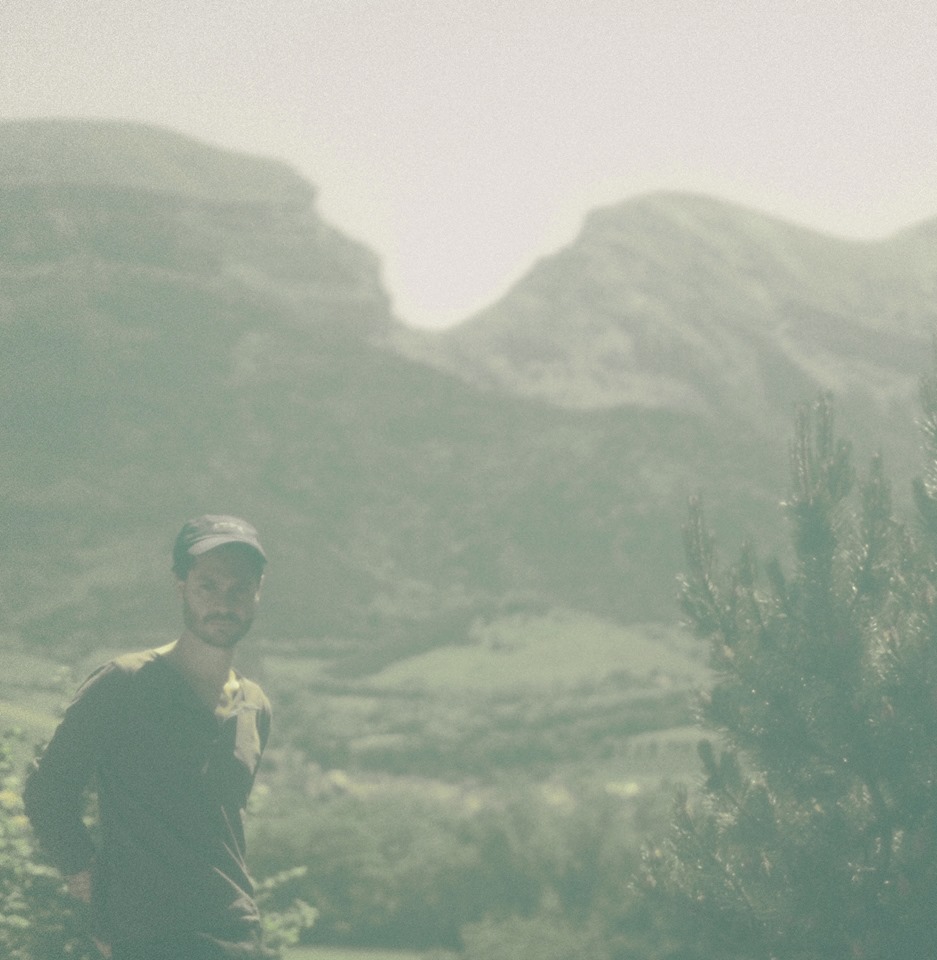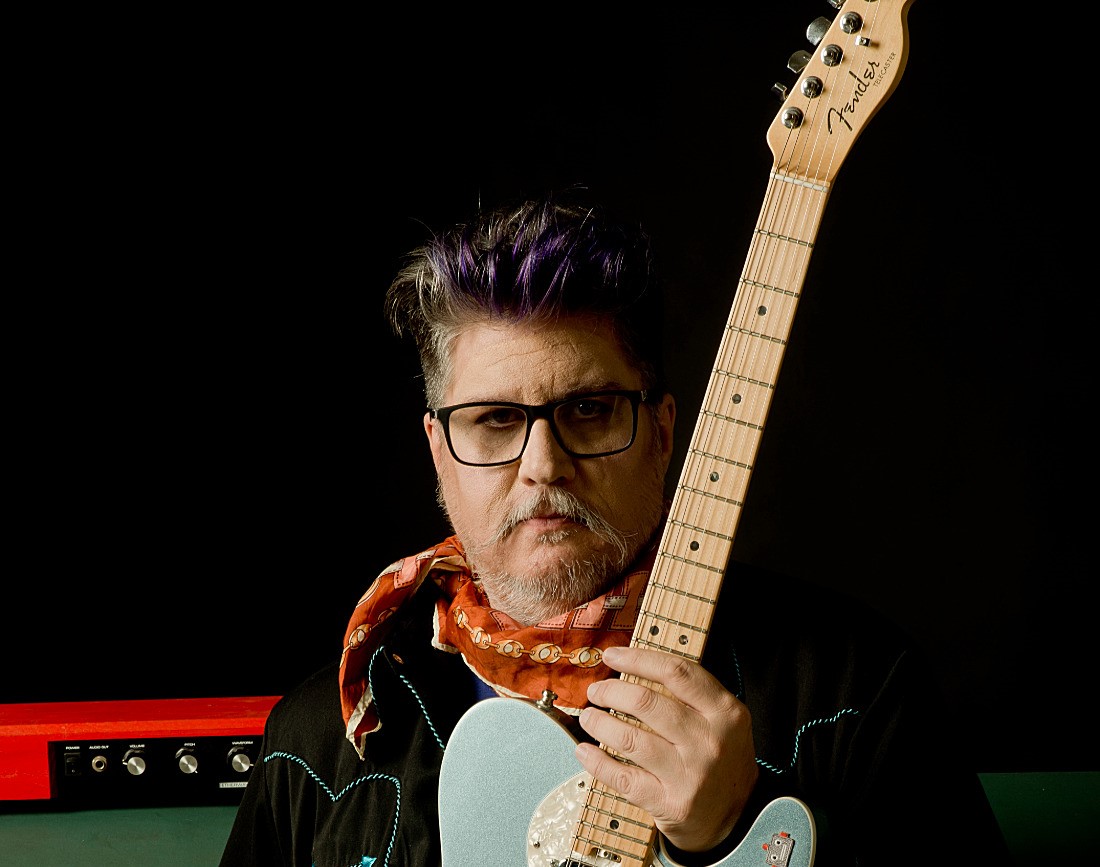Loup Uberto
‘Racconto Artigiano’ is a modern folk record, made by Bégayer guitar player Loup Uberto.
Tell me a bit about yourself: are you from the North of Italy and living in France?
Loup Uberto: I live in France, which is where I was born. My father was born in Biella (in Piemonte, a region in the North-West of Italy) and grew up there till teenage-hood, when my grand-parents and him moved to Matheysine (in the French Alps), my grand-father having enrolled as a miner in La Mure. Yet they didn’t bequeath me any cultural resource from there, at least not consciously. In my childhood, neither my father or my grand-parents ever spoke to me in Biellan or even standard Italian (my father regrets it now); everyone had long got used to speaking French at family reunions. It is only recently, barely two years ago, when I discovered the repertoire from Northern Italy, that I found it intimately necessary to reconnect with the marks this family accidentally left in me. Biellan culture is a rich, mysterious and relatively little known field that has rarely been explored (contrary to the Neapolitan or Calabrian repertoires, whose folk forms are still alive and vigorously championed). When my buddy Lucas Ravinale and I were invited for the first time to sing our songs in Milan, in front of people about our age and keen on independent and experimental music, most of them were discovering these songs from their own region as well as their dialects, just like we hardly know, useless to say, the repertoires of Savoy and Dauphiné or the dialects of the French Alps where we grew up.
You recorded ‘Racconto Artigiano’ in a church.
In May 2019, on the occasion of a composition residency, I had the opportunity to settle in the Protestant church that is in Mens-en-Trièves. I had one week to record, first of all, a work for the radio: Seule, Elle chante, by Aya Mansour, a Baghdadi author with whom I had been lucky to play at the Besançon National Theatre, during a festival associating French and Iraqi artists. As I knew the church had amazing acoustics, I had brought as much equipment as I could so as to make other recordings whenever possible. My work for Aya was completed sooner than expected, and there was I, in this church, for three days of absolute freedom, with a small set of microphones already installed and many of my own music instruments at hand. I could then record a kind of inventory of the experiments I had been trying with various materials in the past four years (more or less), as if I were synthesising my past ideas before moving on to other ventures. It is only a few months later that I thought I should turn these recordings into an album: initially, they were meant to constitute a personal archive, a basis for other works.
You call the recordings sketches.
They can be called “sketches” because they were recorded spontaneously, in one go, and displayed for what they were, without any ornament (incidentally, this is where musical expression and folk fables can meet, hence the parallelism with Walter Benjamin’s essay The Storyteller). If my goal had been to work on a long compositional outline, I could have recorded an entire album for each device (one for feedbacks, one for gsm, one for Italian songs and a last one for collages and two-way FM), but the result would have been flat, rough and conceptual rather than musical. It would have been more scholarly and, in the end, too univocal. There are many reasons why working on a long form would have been captivating, and I might consider this option if I enjoyed a longer residency one day, but then again, I only had three days to collect everything, and I was drawn to the nooks and crannies of such intuitive combinations, with their fragmentary aspect and the symmetry they generated on the final version of the record.
What fascinates you about feedback?
At first, feedbacks were an enthralling tool to try and make some naïve “open machines” inspired by a very approximate reading of Gilbert Simondon’s book Du mode d’existence des objets techniques. I was looking for a way to get interpreter-instruments that could play on their own, without my intervening, and would be sensitive to their environment, responding to the airwaves and vibes surrounding them as to stimuli. The first objects I made were three speakers which worked both as transmitters and receivers (receiving themselves and their likes), whose voices went through a few equalisers and limiters. What I got was a small chamber orchestra that could play with its sonic environment without any conductor being there. If there had been an opportunity, this orchestra could have been used on stage or as an installation, since each move or vibration within the speakers’ range had an influence on their melodic paths. I then adapted this device so that it could be used in a more strictly musical way, turning radio transistors into amplifiers in front of which I placed an electrostatic microphone to get a feedback, and this time, combining small computer automations with a midi controller, I could “stimulate” certain frequencies and conduct long melodic lines.
In this conductor-free orchestral form, and more globally in the very principle of feedback as a phenomenon, speakers express a sort of pure affectivity (affection being here conceived as a faculty to welcome, adapt and attune to a broader body, as when the dancing body reaches this specific balance in which each move calls for the next through incidence, swinging and compensation). What feedback fundamentally represents is an absolute necessity, each of its reactions being systematically determined, irrepressible, totally free — showing a freedom which does not cancel necessity but posits it, where the free individual is not that assuming it controls its volitions, but that which knows how to accept and accommodate to the absolute determination of its moves and thoughts, acknowledging them not as its moves or its thoughts, but as some ephemeral layout of an infinite substance, the moving features of this substance, fragments of an expanse. Feedback always makes its moves directly, without suffering from this aberrant, pathological and specifically human tendency to believe oneself is at the origin of one’s acts.
There are two tracks where you used your gsm. How did you use your gsm as a music instrument?
For mobiles, the story is about the same, but the process is slightly different. Although it is again about feedback, it relies here on the use of satellite waves, which are more wayward. Using two mobiles that are connected (one very basically calling the other), I can either bring the speakers very close to produce a feedback, or draw them apart to enjoy the slight latency there is in a phone call, as if playing with an echo, the whole point being to play with the randomness of the compressors included in phone mikes.
There is something enthralling and exhilarating in re-imagining a homely object meant for a certain use, especially when it is one of the most alienating. In 2016, Quentin Julien invited me to take part in his doctoral research in media archaeology at the University of Grenoble while he was also teaching literature to high-schoolers. A media archaeologist studies our relationship to any object (be it technological, aesthetic, conceptual…) that works as an intermediary between us and the real, which is to say any mediating object, anything that establishes a contact between human beings and the world that surrounds them. For two years, Quentin and I worked together on short sound creations with his high-school students, questioning the uses and limits of the everyday technical devices they own, especially mobiles (which had often become a kind of outgrowth at the end of their arm). We compared them to their ancestors (dumbphones, fixed lines, faxes…) to see how they differed, what their potential was and even with what they could be combined – he main objective always being to divert the technical device from the uses it was initially programmed and fabricated for, to get off the tracks mapped out in the user instructions. It didn’t take us long to realise that the closer we got to the most modern devices, the more our attempts would be thwarted, for the vast majority of today’s mainstream technological devices, with their innumerable functions, are actually sadly limited as soon as the user hopes to get off the beaten track. To return to Simondon, today’s world may be wrongly technical rather than overly technical, since users cannot invent new uses for their machines. The machine is closed, already and intrinsically dead, and in most cases, it offers nothing more than the illusion of a touch of personalisation in a highly fortified zone, rather than the possibility to appropriate a flexible territory and build something on it. Without my noticing it, I was strongly inspired by these studies and I am now applying these principles to musical composition, making my own instruments and using objects in unexpected ways.
How did you use an FM short wave radio as a sound source?
I proceed similarly with short-wave radios. In this case, I randomly built electric bridges on their circuit boards, thus “circuit-bending” them to modify their behaviour. The small transistors can still receive FM waves, but the signal is much distorted by static. Meanwhile, I also composed two sound creations which I sent to Radio Dragon (a fantastic community radio neighbouring the church), suggesting they broadcast them in a row at a precise time. When the broadcasting started, I was in the church with my modified transistors and a whole set of microphones placed around them, recording the two works (FM1 and FM2) live, while they were being played by the radios.
How is your music linked to ‘Experience and Poverty’?
‘Experience and Poverty’ is an article that has often been published along with two other famous texts : The Storyteller and The Task of the Translator. As I was reading Benjamin when working on the recordings, these articles significantly impacted the genesis of the album and then had a more global influence on my taste for peculiar narrative forms in other musical, literary or photographic experiments.
“Indefinition and the apparent silence of a work pull down its narrative frame, shape vanishing points, multiply the fields of interpretation.”
In most European editions of The Enchanted Wanderer, a Russian novel by Nikolai Leskov, Benjamin’s Storyteller serves as a preface. Commenting on the drying up of popular fables as a repertoire and questioning his time’s ability to pass on the past, Benjamin recalls Leskov. This novel tells the story of a long wandering, the protagonist being a tough and honest traveller, an obscure saint whose dry stories captivate a whole bunch of strangers crossing Lake Ladoga with him. For Benjamin, this character is a figure of the craftsman that crosses and merges the peasant’s tale (which is sedentary and territorial) with the sailor’s (which is about erring and estrangement). Wondering why his time cannot shoulder the past, he observes speech is all but rubble, whereas Leskov’s character, with a rich past and simple words, receives the gift to prophecy. Many other examples could illustrate this conception of literature as craftsmanship, and there are many tales that are both poor and powerful. The Life of Samuel Belet could be a more familiar example, with the Swiss author Charles-Ferdinand Ramuz engaging in depicting familiar landscapes from the Alps and Upper Savoy as well as a similar form of lifelong wandering.

In records, books, and images, it is often the dryness of the fable that gets me, for it contains an immense potency to overflow. Indefinition and the apparent silence of a work pull down its narrative frame, shape vanishing points, multiply the fields of interpretation. When a sentence is sufficiently loaded with silence, it seems to be swinging and sprawling while the flight of meaning leaves a vertigo, this gap that remains intact between our words and what is real. If substance lies in the extent to which a work mutes, disturbs or differs, this drive towards poverty strangely proves to hold a vast wealth. Differing may be a kind of discipline, as with Jean Rouch, for whom anthropology was meant to circulate disturbing objects. We have gone a long way since Benjamin’s drained fable, and other virtuosos of the oxymoron have dug more furrows. For instance, Maurice Blanchot made it clear that the defeat of language is also its victory, since literature finds its object as soon as it accepts the abyss that lies between them both, thus having the possibility to use its faults as a fertile ground to meet a naked world. Similarly, old fables made to be sung are a way to ingest the real in its utter rawness, especially at carnival: those worshipping Dyonisos are told to shape with Dyonisian shouts the god of Dyonisian shouts, for popular songs can summon just as much as sacred songs, although they differ from them in so far as they overcome any temptation to defend a universal kind of beauty and any system of belief. They pull off the feat to be both pagan and sacred, profuse and dangerous in their workings, without ever being talkative, since they are determined in the choice never to say too much.
A few months ago, I started copying my notes on this topic in a small collection that is yet to be completed, l’Idiot tremblant, vers une pratique du manque.
Translation: Fanny Quément
– Joeri Bruyninckx
Loup Uberto Official Website
Loup Uberto Bandcamp
three:four records Official Website



